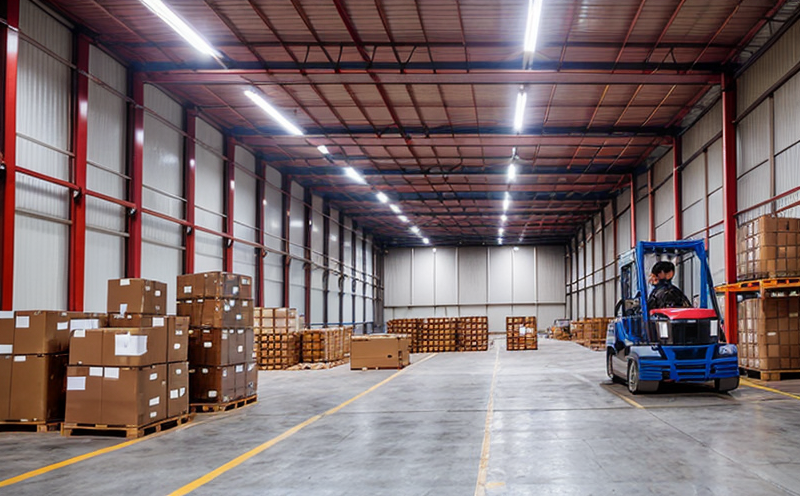ISO 4206 Industrial Bag Tear Resistance Testing
The ISO 4206 industrial bag tear resistance testing is a critical procedure used to evaluate the mechanical integrity of bags designed for packaging and logistics in manufacturing processes. This test method ensures that the materials used are capable of withstanding the stresses encountered during handling, storage, and transportation without sustaining tears or breaches.
The standard specifies the apparatus and procedures required for conducting this test. The testing setup involves a specially constructed tensile tester equipped with grips designed to simulate real-world conditions where bags may be subjected to stretching forces. The specimen is placed between these grips, which are then drawn apart at a specified speed until the bag fails.
The ISO 4206 standard defines tear resistance using three key parameters: maximum force to rupture (R), energy absorbed before rupture (E), and tear propagation length (L). These metrics provide a comprehensive picture of how a particular material performs under tension. For quality managers, compliance officers, R&D engineers, and procurement personnel, understanding these values is crucial for ensuring that the bags meet industry standards.
Preparation of the specimen is critical to obtaining accurate results. Samples must be cut from the bag along the seam or weld line where stress concentration is highest. The dimensions should match those specified in the standard, which allows for consistent testing across different manufacturers and materials. After cutting, the specimens are conditioned in a controlled environment to ensure they reach equilibrium moisture content before testing.
The test procedure itself involves careful alignment of the specimen into the grips of the tensile tester. Care must be taken to avoid any damage or deformation that could affect the outcome. The machine is then operated according to the prescribed speed and load application method, which can vary depending on the type of bag being tested.
Once the test is complete, detailed reports are generated based on the parameters measured during the procedure. These reports typically include a summary of the physical characteristics of the specimen, the force required to cause failure, the energy absorbed up to that point, and the length of tear propagation. This information is invaluable for quality assurance teams as it helps identify weak points in design or manufacturing processes.
Understanding the nuances of ISO 4206 testing can greatly enhance your company's ability to produce reliable packaging solutions. By adhering strictly to this standard, you ensure that every bag meets stringent durability requirements, thereby reducing risks associated with product damage during shipment and handling.
Benefits
Implementing ISO 4206 industrial bag tear resistance testing offers numerous advantages for manufacturers in various industries. Firstly, it enhances overall product quality by identifying potential weaknesses early in the development stage, allowing for timely corrections before mass production begins.
Secondly, compliance with this standard demonstrates a commitment to high standards of integrity and reliability, which can significantly boost customer confidence. This is particularly important given today's increasingly competitive market environment where brand reputation plays a crucial role in success.
In terms of operational efficiency, adopting ISO 4206 ensures that only robust materials are used in packaging processes, reducing the likelihood of costly rework or recalls due to product failures during transportation. Additionally, it supports continuous improvement initiatives by providing objective data points for assessing performance improvements over time.
From a cost perspective, preventing defects through rigorous testing saves money on wasted resources and potential liability claims resulting from damaged products reaching end-users. Moreover, consistent adherence to best practices like those outlined in ISO 4206 helps maintain long-term relationships with suppliers who also adhere strictly to these guidelines.
Industry Applications
The ISO 4206 industrial bag tear resistance testing finds application across multiple sectors within manufacturing and logistics. For instance, it is widely used in food processing industries where maintaining freshness and preventing contamination are paramount concerns. Similarly, pharmaceutical companies rely on this test to ensure that their packaging materials remain intact throughout transportation from manufacturers to hospitals.
In construction materials, the durability of bags used for transporting cement or other heavy aggregates can impact project timelines significantly. Ensuring these bags meet the required tear resistance standards helps avoid delays caused by premature failure during transit.
Automotive parts suppliers also benefit greatly from this type of testing as they need to guarantee that all components arrive at assembly plants undamaged. By leveraging ISO 4206, they can optimize supply chain logistics while maintaining product integrity.
Customer Impact and Satisfaction
Customers who choose manufacturers that follow ISO 4206 standards for industrial bag tear resistance testing experience several positive impacts:
- Enhanced Product QualityProducts are less likely to suffer damage during transit, ensuring consistent quality and reliability.
- Increased SafetyStronger packaging reduces the risk of accidents involving damaged goods or materials.
- Cost EfficiencyReduced waste through more efficient use of resources and fewer replacements needed due to failures.
- Improved ReputationCompanies known for their adherence to international standards often command higher customer loyalty and satisfaction scores.
- Better Logistics ManagementEfficient handling of materials leads to smoother operations, contributing to overall business efficiency.
- Compliance AssuranceMeeting regulatory requirements enhances trust between suppliers and buyers, fostering stronger commercial relationships.
- Environmental BenefitsStronger bags last longer, reducing waste sent to landfills and minimizing environmental impact.
- Competitive EdgeOffering superior products backed by stringent testing can differentiate a company from competitors in the market.





